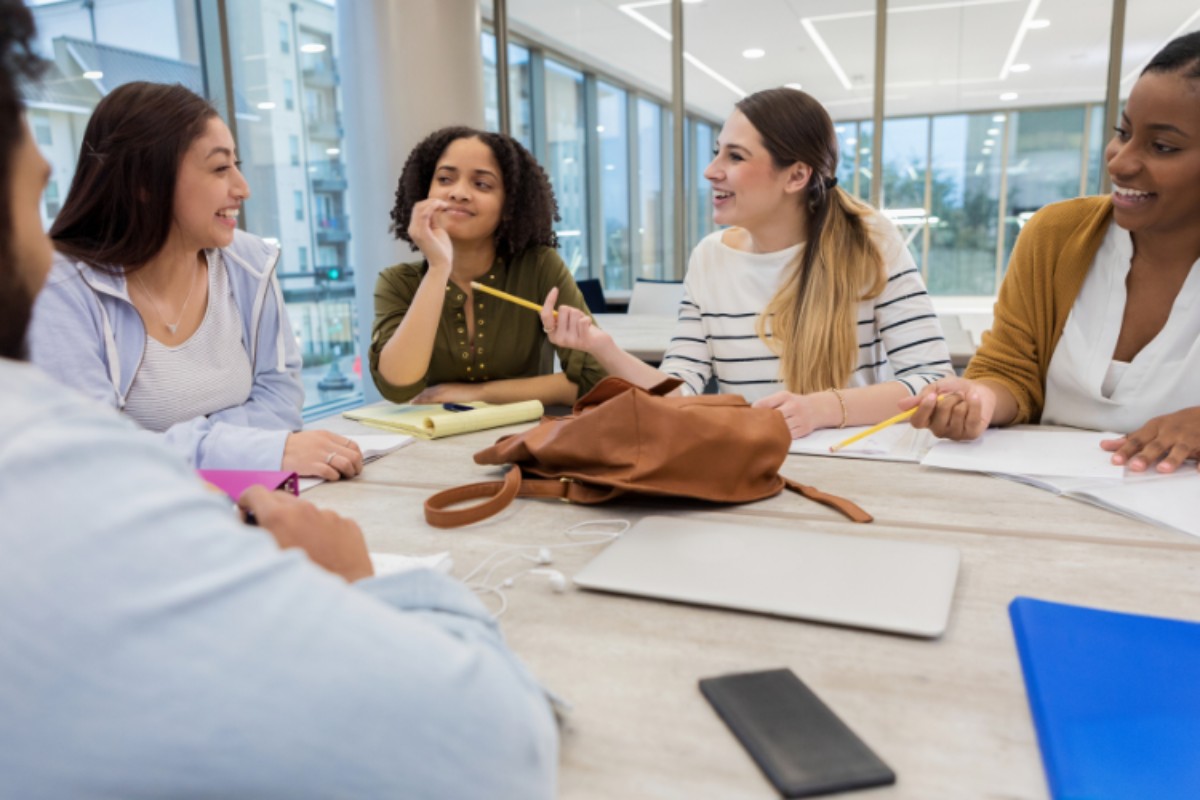The first stage of learning is to attend to what you want to learn. You must look at a piece of art, read a passage, feel the body’s position, listen to a speaker, and other actions that engage your mind and senses in order to learn. Of course paying attention is not always easy, our minds are prone to wandering and distraction. Rather than attempting to remove distractions from our classrooms, we need to cultivate students’ attention so they are able to engage in learning.
Cultivating attention is the topic for James M. Lang’s book “Distracted: Why students can’t focus and what you can do about it.” Dr. Lang provides practical advice for how to capture students’ attention so they can learn what it is we want them to learn. In this blog, I want to focus on the first, and arguably most important, way to cultivate attention - building a classroom community.
Classroom Communities
A classroom community is defined as“a space composed of students—who feel a sense of belonging—coming together with the common goal of learning.” (Alicia Ivory). Why do we care about building a classroom community? Quite simply, the more students feel like they belong in the classroom, the more motivated they are to contribute and learn. Anecdotally, the “least distracted classroom” observed by James M. Lang was the one where “students learned in a community, attentive to (the teacher) and to each other” (p.98). To build community, we must, as mentioned in the definition, foster “a sense of belonging” in our students.
From the first day of class, whether in person or online, we can take steps to foster community. First and foremost, we must make an effort to learn students’ names, pronounce them correctly, and try to commit them to memory. Not that we will remember all our students’ names, especially if it is a large class, but the effort does make a difference. Once you learn students’ names, use them often. This not only reminds students that they are individuals but it will also capture their attention.
Introductions
To build a classroom community, it is critical that students get to know each other. The benefits of building community are numerous. Students can hold each other accountable for attending class and engaging in class activities. They can engage in group learning more effectively by knowing each others’ strengths and weaknesses. They can also engage in respectful classroom discussions involving multiple perspectives that could otherwise lead to controversy.
Spending time at the very beginning of the first class meeting on introductions is a start. One of the most basic icebreakers is having students say their name and then share something about themselves. Depending on your students, you may want to make this question not too intrusive. For example, I ask my pre-service teachers “who was your favorite high school teacher and what made them your favorite?” Through this question, I have learned that the best teachers made students feel like they were cared for as individuals, adding yet more anecdotal evidence that building community and fostering a sense of belonging in the classroom can positively affect students. Other questions you may have students answer are:
- What is your favorite TV show, movie, book, etc?
- What is your favorite breakfast food?
- What did you have for lunch yesterday?
- If you could travel anywhere in the world, where would it be?
- If you could have a coffee with any living person, who would it be?
- What is one thing you hope to learn in this class?
Eventually, you want students to feel comfortable sharing more personal things about themselves, but these surface questions can spark laughter or they can make students think and consider thoughtful responses.
Icebreakers
Following these initial introductions, where students may or may not have been paying attention to one another, it helps to have a follow-up icebreaker so students can truly get to know one another. Most icebreakers allow students to talk to one another in pairs or small groups with focused directives or questions, like those shared above. Pairs and groups can be organized using concentric circles, finding similar cards, random numbers, or more.
You can also hold whole-class icebreakers like taking sides where students have to move to a side of the room depending on their opinion like ‘chocolate or vanilla’ or ‘ federal law or state rights.’ Students choose a side and then are given the opportunity to defend their decision. If your students already know each other a bit, you can have them play a ‘guess who’ game by reading statements students share about themselves. Having students participate in some sort of icebreaker with each other after initial introductions can help them find commonalities, building on the sense of belonging in the classroom.
The movie “Freedom Writers” is all about the power of classroom community. In one important scene, students are told to “step on the line’ if a phrase pertains to them. The teacher starts with benign questions like if they listen to a particular artist and then moves to personal and painful questions like if they have lost one or more friends to violence. The students were able to see that they are not alone, that, despite perceived differences, they all have things in common.
Online introductions and icebreakers

The first week of my hybrid course is dedicated to building community. We meet in-person to introduce ourselves and discuss the class. Then students post an online introductory blog with a picture and short paragraph about themselves. The blog is useful for me to put names to faces, but I rarely see students commenting or viewing these blogs. The face-to-face meeting is where students can begin to build community. However, with the latest wave of coronavirus infections, my college decided that the first week of classes will be entirely online. So, I’m revising my usual first-day activities to build community in an online format.
Seeing faces and hearing voices is the next best thing to being in a physical classroom. I will expect my students to be on camera and unmuted as much as possible during the first class. Students stay off camera for multiple reasons including concern about appearances or their location. Sending a message to students about the expectation of being on camera should help prepare students to be camera-ready. This message also needs to explain why students need to be on camera. Seeing faces helps to build a sense of community, it increases attention, and it will help everyone recognize each other when we are able to meet in person. If you see faces, you will be more connected with one another, and the more connected you are, the more likely you are to be successful in this class. So, be ready to be on camera!
I will still expect my students to introduce themselves by answering a question or two like what they hope to learn from this class. But then I will hold a couple rounds of a basic icebreaker. Students will be placed in randomized breakout groups of 3 people for two minutes. During those two minutes, the students will need to learn each others’ names and find one thing they all have in common. When they return to the group, one person will need to introduce the other two people and share what they have in common. It is a simple icebreaker, but one that I hope will let students get to know each other and start to gain a sense of belonging in the class.
Maintaining Community
Building a classroom community does not happen only on day 1. Like any good relationship, community needs to be cultivated and maintained over time. During class discussions, call on students by name. When students speak to one another, encourage them to use each others’ names rather than pronouns. Using names will both capture attention and will build the sense of belonging in the classroom.
Icebreaker activities like the ones mentioned above can, and should be used in later classes. As students get more comfortable with one another and recognize the classroom as a safe space, questions can reveal more personal information. For example:
- What is the most challenging thing you have overcome?
- What is your happiest moment?
- What was your most embarrassing moment - that you can now laugh at?
- Have you ever experienced anxiety?
- What is your biggest fear?
These questions mostly address emotions. Depending on your classroom, you may want to keep it positive like the first three questions. But you may also want to touch on things that can be difficult - showing that we have all come through challenges, and yet are still here and are a part of this classroom community. .
The other stages of learning are processing or encoding to incorporate into our existing body of knowledge and then to retrieve newly learned information from our memory. This three-phase scheme is described by James M. Lang in his book “Distracted: Why students can’t focus and what you can do about it,” published in 2020 by Basic Books: New York, NY.







